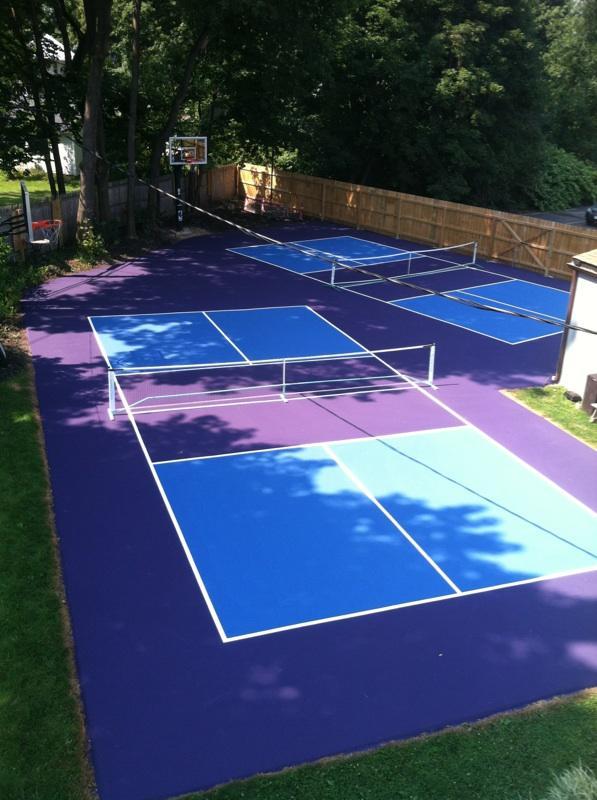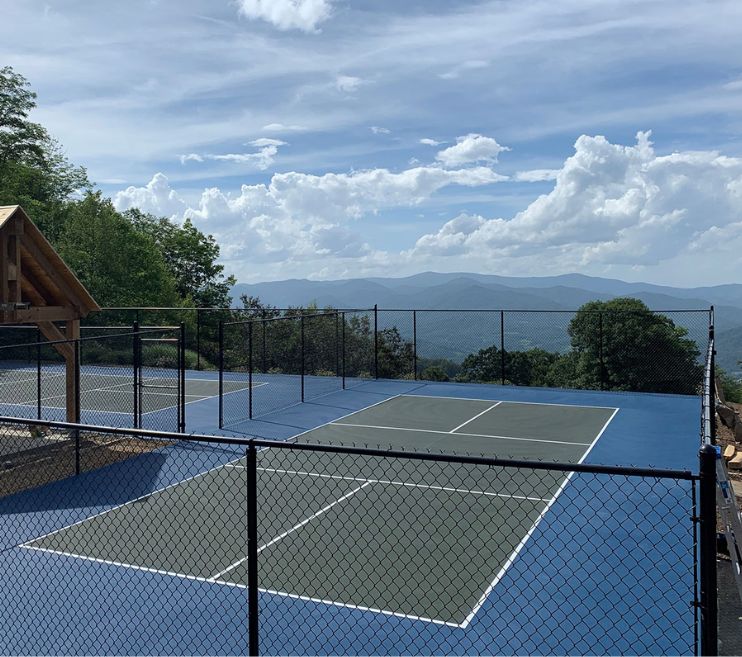Exactly How to Ensure High Quality and Long Life with a Pickleball Court Contractor
Exactly How to Ensure High Quality and Long Life with a Pickleball Court Contractor
Blog Article
A Comprehensive Guide to Designing the Perfect Pickleball Court for All Skill Levels
Designing a pickleball court that caters to gamers of varying skill degrees demands a multifaceted approach, including important aspects such as court dimensions, surface area materials, and accessibility functions. What specific considerations must be focused on to make certain a successful application?

Comprehending Court Dimensions
Comprehending the measurements of a pickleball court is essential for both players and designers, as these specifications make sure a consistent and reasonable having fun experience. A standard pickleball court determines 20 feet vast by 44 feet long for both singles and doubles play. The court is separated right into 2 equivalent halves by a net that stands 36 inches high at the sidelines and 34 inches at the center.
Key attributes of the court consist of the non-volley area, generally described as the "kitchen," which prolongs 7 feet from the net on both sides. This location is critical for controling gamer activity and volleying, making sure calculated play. Additionally, the solution locations on each side of the court are essential, gauging 10 feet large and 15 feet deep, developed to accommodate appropriate serving strategies.
Surrounding the court, a location of at the very least 10 feet need to be assigned as the safety and security zone, allowing gamers ample room to relocate and prevent injuries during play. Adhering to these dimensions not just fosters fair competitors but additionally promotes security and pleasure for all individuals, making it essential for any kind of pickleball court design.
Selecting the Right Surface Area
The choice of playing surface for a pickleball court considerably influences the video game's characteristics and player experience. Selecting the proper material is essential for making sure player convenience, safety, and performance. Common surfaces consist of asphalt, concrete, and specialized sporting activities floor covering.
Asphalt is a preferred choice as a result of its affordability and sturdiness. It offers a regular having fun surface area yet can be tough on joints over expanded play. Concrete, while comparable in durability, offers minimal adaptability, possibly bring about increased effect on gamers' bodies.
For a more supported experience, lots of facilities decide for specific sporting activities floor covering, such as modular tiles or artificial surfaces. These products commonly consist of shock-absorbing residential properties, reducing the threat of injuries and improving gamer comfort. Additionally, such surface areas can enhance round bounce consistency, which is necessary for fair play.
When choosing a surface area, take into consideration factors such as environment, maintenance requirements, and the intensity of play. An appropriate surface not only improves gameplay yet also adds to the longevity of the court itself. Ultimately, recognizing the subtleties of various materials will help in developing an optimal pickleball environment tailored to different ability degrees.
Optimum Court Format
An ideal court design is necessary for making the most of both gamer efficiency and viewer satisfaction in pickleball. The measurements of a basic pickleball court are 20 feet broad by 44 feet long for doubles play, preserving a clear limit that improves gameplay. The net, positioned at 36 inches high at the sidelines and 34 inches in the facility, is important for preserving the dynamics of the video game.
Including assigned locations look at this website around the court for players to relocate freely is vital. A minimum of 10 feet of clearance on all sides of the court is advised to stop accidents and provide room for viewers. Furthermore, alignment plays a substantial function; the court needs to ideally be straightened north-south to minimize the effect of sunlight glare on gamers during optimal hours.
Clear and noticeable court markings help in gameplay, with contrasting shades for limits and non-volley zones that define important locations for players. Overall, a well-designed court layout cultivates an engaging environment for both spectators and players.

Access Factors To Consider
When designing a pickleball court, making sure ease of access for all players, consisting of those with specials needs, is extremely important. An attentively created court can promote inclusivity and motivate involvement from individuals of differing capabilities.

Gain access to routes to the court need to additionally be thoroughly prepared. Make sure that paths bring about the court are large sufficient for mobility device users and are geared up with ramps where needed. Signs should be large and clear enough to be quickly checked out.
Moreover, seating locations should be designed to permit for very easy accessibility to and from the court. This includes providing designated spaces for spectators that might have movement challenges.
Lastly, make sure that washroom facilities neighboring meet ease of access standards. By thinking about these elements, you can develop a pickleball court that is welcoming and useful for everybody, thus promoting a dynamic and varied area of gamers.
Maintenance and Maintenance
Appropriate upkeep and upkeep of a pickleball court are essential for making certain optimal playing problems and lengthening the lifespan of the center. Regular evaluations need to be conducted to determine and resolve any problems or put on, such as cracks in the surface or loose netting. These issues, if left unattended, can negatively affect gameplay and safety and security.
Surface area upkeep is critical; courts should be cleaned up often to eliminate particles, leaves, or dirt that can impact traction. For hard courts, regular pressure washing is suggested to preserve surface stability and visual appeals. If your imp source court is made of softer materials, such as asphalt, resurfacing or sealing might be required to safeguard against weather-related wear.
In addition, web height and tension must be inspected on a regular basis, as incorrect settings can modify gameplay. Preserving surrounding areas, including secure fencing and illumination, is equally vital for making certain a risk-free and pleasurable atmosphere.
Conclusion
In verdict, the design of a perfect pickleball court demands a precise approach that includes correct dimensions, suitable surface area materials, and thoughtful design. Pickleball court contractor. Making sure accessibility for all players and viewers is important for fostering a comprehensive environment. Normal maintenance is crucial for maintaining court top quality and safety and security. By sticking to these standards, the perfect pickleball court can be produced, promoting pleasure and athletic advancement for gamers of varying skill levels.
Designing a pickleball court that provides to players of reference differing ability levels necessitates a complex technique, including vital elements such as court measurements, surface materials, and access functions.Understanding the measurements of a pickleball court is critical for both designers and gamers, as these specs ensure a reasonable and constant having fun experience.The option of playing surface area for a pickleball court substantially influences the game's characteristics and player experience.An ideal court layout is necessary for optimizing both player efficiency and viewer satisfaction in pickleball. By adhering to these guidelines, the best pickleball court can be created, promoting pleasure and sports growth for gamers of differing ability degrees.
Report this page